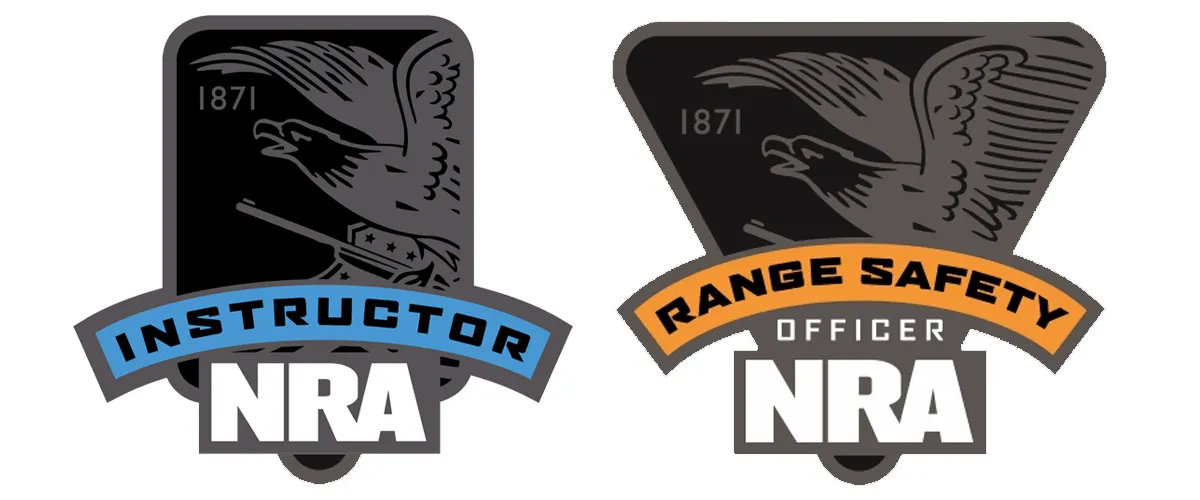
FIREARMS TRAINING
WITH YOUR PEACE IN MIND
FIREARMS SAFETY & INSTRUCTION COURSES

ETA Firearms is your go-to choice for gun safety classes in Arizona. We also educate for concealed weapon permits, tactical training and more.
Firearms safety courses teach important safety practices and procedures to help prevent accidents and injuries when handling firearms. Being knowledgeable and trained in safe handling techniques can help reduce the risk of accidental discharges and injuries to yourself and others.
NRA CERTIFIED INSTRUCTORS
USCCA CERTIFIED INSTRUCTORS
WOMEN INSPIRED COURSES
ACTIVE SHOOTER TRAINING
FIRST AID COURSES
CONCEALED CARRY WEAPONS
REAL ESTATE AGENT SAFETY
LED CLASSES
It's not only about the novelty of shooting or owning a "gun". It's about our obligation to protect and freely exercise our 2nd Amendment right. We offer a variety of courses created by licensed instructors that teach respect, safety, responsibility and the legal requirements necessary to own and possess a personal firearm in Arizona.



OUR TRAINING COURSES & CLASSES
Taking a firearms safety course is an important step in being a responsible firearms owner and protecting your assets, yourself, and others. It can help you develop the knowledge, skills, and mindset necessary to safely and confidently handle firearms in a variety of situations.
NEW GUN OWNER TRAINING PROGRAM
1:1 & GROUP TRAINING AVAILABLE
SPECIALTY CLASSES & COMBO COURSES
WOMEN ONLY COURSES
CUSTOM CREATED COURSES & GROUPS
Schedule a free consultation here:
Stay Informed Through our Blog

Evaluating Threats and Vulnerabilities: Conducting Comprehensive Security Assessments for Churches and Businesses

Conducting comprehensive security assessments is crucial for churches and businesses to identify potential threats and vulnerabilities. By evaluating their security posture, organizations can implement effective measures to protect their assets, data, and communities.
1. Understanding the Assessment Process
Define Objectives
- Identify Goals: Determine what the assessment aims to achieve, such as improving physical security, protecting sensitive data, or ensuring the safety of personnel and visitors.
Establish a Team
- Diverse Expertise: Assemble a team with varied expertise, including security professionals, IT specialists, and representatives from the organization.
2. Threat Identification
Internal Threats
- Employee Misconduct: Assess risks from insider threats, such as employee theft or data breaches.
- Negligence: Evaluate potential vulnerabilities arising from careless behavior or lack of training.
External Threats
- Criminal Activity: Identify risks related to theft, vandalism, or violent incidents.
- Cyber Threats: Recognize potential cyberattacks, including phishing, ransomware, and data breaches.
Environmental Threats
- Natural Disasters: Consider risks from floods, earthquakes, or severe weather that may impact operations or safety.
3. Vulnerability Assessment
Physical Security
- Facility Inspection: Conduct a thorough inspection of the premises, identifying weak points such as unsecured entrances, inadequate lighting, or lack of surveillance.
- Access Control: Evaluate existing access control measures, including key management and visitor policies.
Cybersecurity
- Network Vulnerabilities: Assess the security of networks, systems, and databases. Check for outdated software and insufficient firewall protection.
- Data Management: Review data handling practices, including encryption, access controls, and backup procedures.
Human Factors
- Training Gaps: Identify areas where staff may lack training on security protocols or emergency response.
- Incident Reporting: Evaluate the effectiveness of current reporting mechanisms for security incidents.
4. Risk Analysis
Assess Likelihood and Impact
- Risk Matrix: Utilize a risk matrix to evaluate the likelihood and potential impact of identified threats and vulnerabilities.
- Prioritize Risks: Rank risks based on their severity to focus on the most critical areas first.
Scenario Planning
- Conduct Simulations: Develop potential scenarios for various threats to understand how they could impact the organization and test response plans.
5. Developing an Action Plan
Mitigation Strategies
- Implement Security Measures: Based on the assessment, outline specific actions to address identified risks, such as enhancing physical security, updating cybersecurity protocols, or providing employee training.
- Resource Allocation: Identify necessary resources—financial, human, and technological—to implement these measures.
Timeline and Responsibilities
- Action Plan: Create a detailed action plan with timelines and assigned responsibilities for each security improvement.
6. Continuous Monitoring and Improvement
Regular Reassessments
- Ongoing Evaluations: Schedule regular security assessments to adapt to evolving threats and vulnerabilities.
- Feedback Loop: Establish a feedback mechanism for staff and community members to report concerns and suggest improvements.
Stay Informed
- Threat Awareness: Keep up with the latest security trends, emerging threats, and best practices to enhance organizational resilience.
Conducting comprehensive security assessments is vital for churches and businesses to safeguard their operations and communities. By systematically evaluating threats and vulnerabilities, organizations can develop targeted strategies to mitigate risks and ensure a safe environment. Ongoing monitoring and continuous improvement will further enhance security posture, fostering trust and confidence among stakeholders.
Monday through Sunday
By appointment only
Copyright © 2024 E.T.A. FIREARMS | All Rights Reserved





